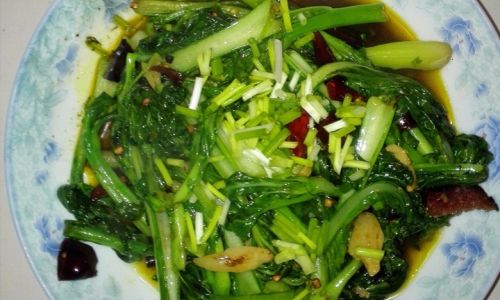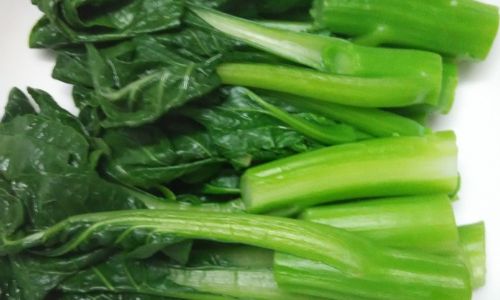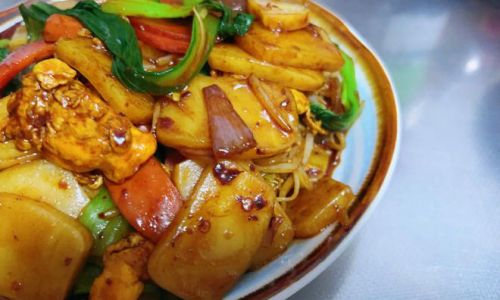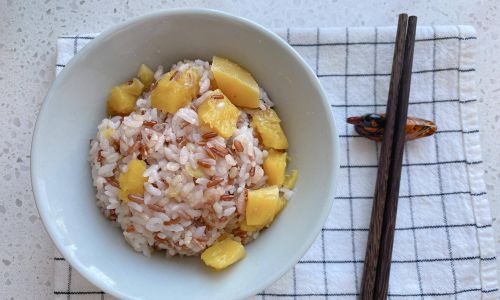Table of content
Chinese flowering cabbage, known as choy sum or yu choy, is a leafy green vegetable celebrated for its delicate stems, tender leaves, and subtle sweetness. Widely used in Asian cuisine, this versatile ingredient can transform a simple meal into a culinary delight when prepared correctly. Achieving the perfect balance of tenderness and flavor requires attention to detail, from selection to cooking techniques. This comprehensive guide explores expert methods to ensure your Chinese flowering cabbage is both delicious and tender, every time.
Understanding Chinese Flowering Cabbage
Chinese flowering cabbage (Brassica rapa var. parachinensis) is a member of the Brassica family, which includes bok choy and kale. Its slender stems and dark green leaves are edible from root to tip, offering a mild, slightly bitter taste that pairs well with various seasonings. The vegetable’s texture is key to its appeal: stems should be crisp yet tender, while leaves retain a vibrant green hue without wilting.
Selecting the Freshest Produce
The journey to perfect Chinese flowering cabbage begins at the market. Look for bunches with:

- Vibrant Green Leaves: Avoid yellowing or browning edges, which indicate age or mishandling.
- Firm Stems: Gently squeeze the stems—they should feel crisp, not soft or rubbery.
- Compact Growth: Leaves should hug the stems tightly, without excessive spacing (a sign of overmaturity).
Freshness directly impacts cooking time and texture. Overgrown or wilted cabbage may become mushy, even with careful preparation.
Preparation: Cleaning and Trimming
Proper preparation ensures even cooking and removes potential contaminants:
- Rinse Thoroughly: Submerge the cabbage in cold water, swishing gently to dislodge dirt. Repeat until the water runs clear.
- Trim the Ends: Use a sharp knife to slice off ½ inch from the base of the stems. This removes tough, fibrous sections.
- Separate Stems and Leaves (Optional): For stir-fries, separate stems and leaves to control cooking times. Stems take 1–2 minutes longer to soften.
Cooking Methods for Tender Results
The goal is to retain the vegetable’s natural crunch while infusing it with flavor. Below are four techniques, each with unique advantages.
Blanching: The Foundation of Brightness
Blanching locks in color, texture, and nutrients:
- Boil Water: Fill a large pot with water, add 1 tbsp salt and 1 tsp baking soda (optional, for vibrant green).
- Prepare Ice Bath: Fill a bowl with ice water.
- Cook Briefly: Add cabbage to boiling water. Stems-first for 1 minute, then submerge leaves for 30 seconds.
- Shock in Ice Bath: Immediately transfer to ice water to halt cooking. Drain and pat dry.
Blanched cabbage can be served cold with sesame dressing or reheated in stir-fries.
Stir-Frying: Mastering High Heat
Stir-frying demands precision but yields restaurant-quality results:
- Prep Ingredients: Mince garlic, slice ginger, and have soy sauce, oyster sauce, and sesame oil ready.
- Heat the Wok: Over high heat, add 2 tbsp peanut oil. Swirl to coat.
- Cook in Stages:
- Stems First: Add stems and stir for 1 minute.
- Leaves Next: Toss in leaves; stir-fry 1–2 minutes until wilted.
- Season: Add 1 tbsp soy sauce, 1 tsp oyster sauce, and a pinch of sugar. Finish with a drizzle of sesame oil.
Pro Tip: Overcrowding the wok steam-cooks the cabbage instead of frying it. Cook in batches if needed.
Steaming: Gentle and Nutrient-Rich
Steaming preserves nutrients and delicate flavors:

- Use a Bamboo Steamer: Line with parchment paper to prevent sticking.
- Arrange Evenly: Place cabbage in a single layer.
- Steam Time: 3–4 minutes until stems are tender but not mushy.
- Season Lightly: Toss with toasted sesame seeds, a splash of rice vinegar, and a pinch of salt.
Braising: Depth of Flavor
Braising softens tougher stems and mellows bitterness:
- Sauté Aromatics: In a skillet, cook 1 tbsp minced garlic and 1 tsp chili flakes in oil.
- Add Cabbage: Toss stems first, then leaves.
- Liquid: Pour in ¼ cup chicken broth or water. Cover and simmer 3–5 minutes.
- Finish: Uncover, reduce liquid, and stir in 1 tsp soy sauce.
Seasoning and Flavor Pairings
The vegetable’s mild taste adapts to diverse seasonings:
- Classic: Oyster sauce, soy sauce, garlic, and ginger.
- Spicy: Add chili oil or fresh bird’s-eye chilies.
- Umami-Rich: A splash of fermented black bean sauce.
- Light: Lemon zest, toasted sesame seeds, and a drizzle of olive oil.
Avoid heavy sauces that overwhelm the cabbage’s natural flavor.
Serving Suggestions
- As a Side Dish: Pair with steamed rice, grilled meats, or tofu.
- In Soups: Add blanched cabbage to miso or wonton soup 5 minutes before serving.
- Salads: Toss cold blanched cabbage with shredded carrots, cilantro, and a lime dressing.
- Noodle Bowls: Layer over ramen or rice noodles with a savory broth.
Common Mistakes to Avoid
- Overcooking: Leaves turn olive-green and stems become limp. Test doneness by piercing stems with a knife—they should yield slightly.
- Insufficient Oil: Stir-fries require enough oil to conduct heat evenly. Use 1–2 tbsp per bunch.
- Skipping Ice Bath: Without shocking, blanched cabbage loses vibrancy and becomes dull.
- Uneven Sizes: Chop stems and leaves into uniform pieces for consistent cooking.
Advanced Techniques for Enthusiasts
- Velveting: Marinate cabbage in a mixture of cornstarch, egg white, and oil before stir-frying for silken texture.
- Fermented Flavors: Top with doubanjiang (spicy bean paste) or kimchi brine for a tangy kick.
- Grilling: Lightly char whole stalks over a grill for smoky notes.
Cultural Significance and Regional Variations
In Cantonese cuisine, choy sum is a symbol of prosperity, often served during Lunar New Year. Regional preferences vary:
- Guangdong Province: Stir-fried with garlic and preserved black beans.
- Sichuan: Sautéed with doubanjiang and Sichuan peppercorns.
- Shanghai: Braised in light broth with ham or dried shrimp.
Conclusion
Cooking Chinese flowering cabbage to perfection is an art that balances science and intuition. By selecting fresh produce, mastering cooking techniques, and experimenting with flavors, you can elevate this humble vegetable into a dish that delights the senses. Whether stir-fried, steamed, or blanched, the key lies in preserving its natural tenderness while coaxing out its subtle sweetness. With practice, you’ll discover that even the simplest preparation can yield extraordinary results—a testament to the beauty of minimalist cooking.
Final Tip: Taste as you cook. Adjust seasonings incrementally, and remember that a pinch of sugar can sometimes bridge the gap between good and unforgettable.





0 comments